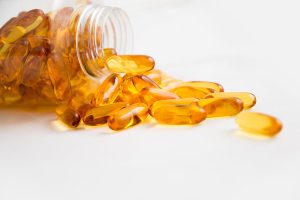Health products are the popular term for health food. Article 3.1 of GB16740-97 “General Standard for Health (Functional) Foods” defines health food as: “Health (functional) food is a type of food that has the common characteristics of general food, can regulate the functions of the human body, and is suitable for consumption by specific groups of people. , but not for the purpose of treating diseases.” Therefore, in the promotion of products, related words such as efficiency and success rate cannot appear. The health-care effects of health foods are gradually being accepted by the general public in today’s society.
Health products are a general name in mainland China. In foreign countries, including Hong Kong, Macao and Taiwan, they are generally called dietary supplements (Dietary Supplements).
On January 8, 2019, 13 departments including the State Administration for Market Regulation jointly deployed a 100-day operation to rectify chaos in the “health care” market.

Basic classification #
Health products on the market can be roughly divided into general health foods, health medicines, health cosmetics, health supplies, etc.
Health food has food properties, such as tea, wine, bee products, drinks, soups, fresh juices, medicinal diets, etc., and has color, aroma, shape and quality requirements, and generally has no requirements on dosage;
Health-care drugs have nutritional and food-based natural drug properties and should be used in conjunction with treatment. There are usage and dosage requirements. Drugs currently bearing the batch number of “health”;
Health cosmetics have the properties of cosmetics. They not only have small local modification effects, but also have transdermal absorption and external and internal effects, such as health perfumes, creams, mouthwash, etc.;
Health care products have the nature of daily necessities, such as fitness equipment, massagers , water magnets, sachets, clothes, shoes and hats, blankets, etc. As people’s awareness of health and wellness continues to increase, the health food market has become unprecedentedly popular. In the hot market, the quality of various products is also uneven. Next, I will teach you how to choose regular and suitable health foods.
Flag definition #
The color of the health food logo is a sky blue pattern, and the lower half of the icon has the words health food (see overview picture). The State Administration for Industry and Commerce and the Ministry of Health stipulated in a notice that in visual advertisements such as films, newspapers, periodicals, printed matter, stores, and outdoor advertisements, the area occupied by health food logos must not be less than 1/36 of the total advertising area. Among them, the diameter of health food signs in newspapers, periodicals and printed advertisements shall not be less than 1 cm.
According to statistics in 1982, the average life expectancy of Japanese people is 77 years old, that of the United States is 75 years old, and that of other developed countries has also increased to between 74 and 79 years old. This phenomenon will inevitably lead to changes in the population structure, that is, the proportion of the elderly population is increasing.
In 1982, Japan’s population aged 65 and over accounted for 9% of Japan’s total population. Three years later, in 1985, it exceeded 10%. It is predicted that it will reach 15% at the beginning of the 21st century and exceed 20% in 2020. European and American countries also show the same trend. The elderly population is expected to account for 15% of the total population at the beginning of the 21st century.
The consequences of the overall increase in the proportion of the elderly population include rising medical expenses. Another prominent problem is the increase in diseases of affluence. Take Japan, for example. In 1980, 40% of Japan’s total medical expenditures were spent on circulatory organ diseases and diabetes. The two projects cost 2.2 trillion yen.
Basic Features #
There are many ways to make health food raw materials. In recent years, there have been ways to use Chinese herbal medicine as raw materials, and Chinese herbal medicine has been used for human health care since ancient times. The ancients divided Chinese herbal medicine into top-grade medicine, middle-grade medicine, and low-grade medicine. The top-grade medicines are used for human health care, and the middle-grade and lower-grade medicines are combined according to the compatibility of monarch, minister, adjuvant and envoy, and the right medicine is prescribed to treat diseases. ” Shen Nong’s Materia Medica ” and “Compendium of Materia Medica” say: “The medicine is used to nourish life and respond to the sky. It is non-toxic, taken in large amounts and for a long time and will not hurt people. Those who want to lighten the body and replenish qi, prevent aging and prolong life, should follow this classic.” Tao Hongjing, a famous doctor in the Southern Dynasties, said: “The properties of the top-grade medicine can also cure diseases. But the power is strong and it is not quick-acting. Taking it regularly over time will definitely bring great benefits.” Other Chinese herbal medicines generally have certain toxicity. It can be seen that the ancients understood the essence of using Chinese herbal medicine to protect the human body and treat diseases.
The development, production and consumption of health food are different from medicines, especially those using Chinese herbal medicine as raw materials. Health food cannot have the same quick-acting effect in curing diseases as drugs, but it must be non-toxic.
1. Processed from materials or ingredients commonly used in food.
2. Ingest in the usual form and method.
3. Label marked with biological adjustment function.
According to the opinion of Japanese functional food expert Chiba Hideo, functional food must meet the following six conditions:
1. Purpose guide and production purpose are clear (it does have clear health care functions);
2. Contains functional factors (or active ingredients) whose chemical structures have been elucidated;
3. Functional factors exist stably in food and have specific forms and contents;
4. Effective when taken orally;
5. High safety;
6. Acceptable by consumers as food.
Precautions #
Precautions for health care products include the following 6 aspects:
1. In publicity, it is strictly prohibited to use medical terms or terms that are easily confused with medicines, and it is prohibited to promote the efficacy of medicines.
2. It is strictly prohibited to promote the effect of improving and enhancing sexual function.
3. The advertisement must be accompanied by an obvious and uniform sky-blue health food logo. The diameter of the health food logo in newspaper and printed advertisements must not be less than 1 cm.
4. Health food products that fail to pass the random inspection by the health administrative department at or above the county level will be suspended from advertising within their jurisdiction. They can only continue to be advertised after the original random inspection department or its superior department passes the random inspection again.
5. Printed advertisements must be published with content approved by the industrial and commercial department. No modification or addition of advertising content is allowed without authorization. The approval number of the printed matter must be indicated.
6. Health food products must be marked with the “Health Food” logo and the health food approval number [Health Food and Health Character (Year) No. xxx] or [Guo Shijian Word G (Year) XXXXX].

 April 1, 2024
April 1, 2024 










